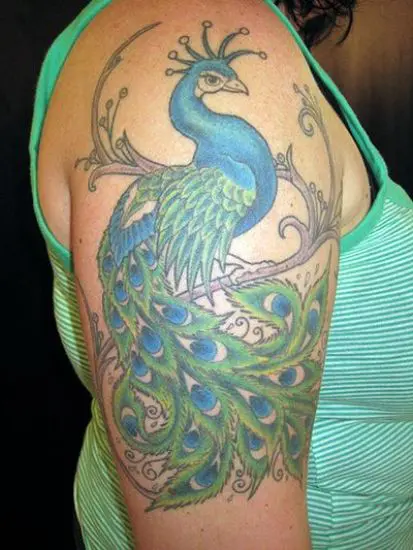Patients in Singapore often have the misconception that with lasers, tattoos are simple, easy and cheap to remove. They come in expecting that their tattoo will be gone in one laser session that costs around the same price as the tattoo itself.

Unfortunately, while it may be relatively fast and affordable to get a tattoo (equipment only costs a few hundred dollars), removing a tattoo safely is not such a straightforward process. Laser tattoo removal is a long and expensive journey requiring extremely expensive laser equipment wielded with the utmost care by an experienced doctor.
While laser tattoo removal is not perfect, most if not all tattoos can be removed with enough sessions with powerful lasers and sufficiently advanced techniques. Based on my experience with laser tattoo removal in Singapore though, some tattoo colours may be extremely complicated and almost impossible to remove.
Which tattoo colours are the most difficult to remove and why?
Every patient and tattoo is different, and the difficulty of each case can vary depending on numerous patient and tattoo factors. Generally, though, I find that the most difficult tattoos to remove with laser tattoo removal in our local Singaporean context are those bright green or light blue tattoos in darker skin colours.

Most clinics do not have the right laser wavelength for these colours
The majority of tattoo removal lasers in Singapore do not natively generate the right wavelength to remove these colours. In order to break down the tattoo pigments, the wavelength of laser light used needs to be strongly absorbed by those tattoo colours.

Most clinics in Singapore have lasers that output only 1064nm infrared or 532nm green laser light. A small minority do have other wavelengths such as 660nm red light available but achieve this through conversion using slow, expensive and low powered dye handpieces. Only a rare few clinics in Singapore have full-powered red lasers such as Discovery Pico Plus or Picosure.

The wavelength used to clear these colours is strongly absorbed in melanin
For the laser to break up tattoo pigments, it has to pass through the superficial layers of the skin that contain melanin. Some of the laser energy is absorbed by the melanin. The wavelengths used for green/blue tattoos have high melanin absorption, hence a significant proportion of the laser energy does not make it to the actual tattoo pigments.
This is worse in darker skin types that have more melanin and are also more prone to developing post-inflammatory hyperpigmentation during healing, compounding the problem.

Other difficult tattoo colours
Generally, bright colours are more difficult to remove. Sometimes they would be mixed in with white tattoo pigment which may oxidise, requiring more laser sessions to remove.
Red tattoos deserve a special mention too. As you can see from the graph in the previous section, green lasers that are used to remove red colours are also strongly absorbed by melanin and can run into the same kinds of problems. However, this is not why red tattoos are complicated. Certain types of red tattoo pigments such as azo, once lasered, can actually trigger an allergic reaction in patients resulting in hypertrophic scarring. While these are not easy to manage and remove, they can still be treated albeit with some difficulty.
What Can Be Done?
Careful control of laser energy, combination with fractional laser pre-treatment, and pigmentation and scar control topicals before and after laser tattoo removal can help in tough cases.
More Questions?
While most tattoos can be removed, some are harder than others to remove with lasers due to technical factors, new advanced tattoo removal techniques can be applied to remove stubborn ink that you no longer want in your body.
As you've probably noticed, I have put a lot of thought into how best to remove tattoos with lasers. If you have any further questions, feel free to drop me a message or contact me through my office. I’ll try my best to help!
References
- Kurniadi I, Tabri F, Madjid A, Anwar AI, Widita W. Laser tattoo removal: Fundamental principles and practical approach. Dermatol Ther. 2021 Jan;34(1):e14418. doi: 10.1111/dth.14418. Epub 2020 Oct 26. PMID: 33068020.
- Reiter O, Atzmony L, Akerman L, Levi A, Kershenovich R, Lapidoth M, Mimouni D. Picosecond lasers for tattoo removal: a systematic review. Lasers Med Sci. 2016 Sep;31(7):1397-405. doi: 10.1007/s10103-016-2001-0. Epub 2016 Jun 17. Erratum in: Lasers Med Sci. 2017 Feb;32(2):483. PMID: 27311768.
- Ashinoff R, Levine VJ, Soter NA. Allergic reactions to tattoo pigment after laser treatment. Dermatol Surg. 1995 Apr;21(4):291-4. doi: 10.1111/j.1524-4725.1995.tb00175.x. PMID: 7728477.
